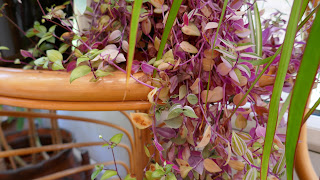
It is over three years and more than a hundred entries ago since I last featured the
bulb lasagne on these pages. This year I have changed the recipe just a little and started to put them together a few weeks earlier. The thinking behind the rush to get them started is that I like to make up the odd extra tub to give to friends. However, this wretched pandemic has prompted the earlier than usual planting up of the tubs, before the next attack on our civil liberties results in a new lockdowns.
The one seen in the pictures above is for the next door neighbours who kindly look after our two felines when we go away. Another has found its way to a very good golf buddy and his understanding wife. They have a refreshing new found passion for all things horticultural and a recent visit to their garden has sparked a few promising ideas of my own. The pictures show how the layers are built up starting with usual crocks and drainage materials before the first compost layer is added.
The alteration in the recipe for this year has been the addition of some crocus in the second layer. So working from the top down, this years tubs have:
~ winter pansies on the top, although they will fade quite quickly they can be deadheaded to prolong their display and they do seem to distract the squirrels from excavating the buried bulbs (I hope this is not famous last words)
~ first sub layer are the irises and crocuses, this year iris reticulata Joyce and crocus Orange Monarch.
Depending on the severity of the winter they will start to show in January or February
~ second sub layer are the daffodils, narcissus King Alfred and narcissus Jonquilla Martinette, hopefully they will emerge in March
~ the lowest layer is the tulips, and this year the complementary Triumph Slawa and Triumph Synaeda Amor should complete the display by April/ May time.
Despite this focus on next spring, the garden is still doing its best to hang onto its summer glamour so I have been in no particular hurry to start the cutting back and tidying up!
Top tip: over the past 30 years the September climate statistics clearly indicate that a late "Indian Summer" is always a distinct possibility. So planning for late season colour is more important than ever.

















































